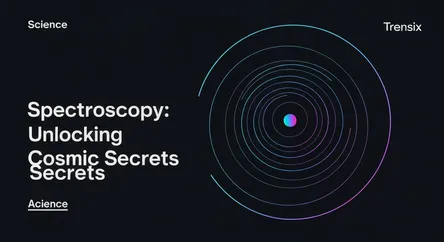Science
Spectroscopy: Unlocking Cosmic Secrets

Discover spectroscopy, the science of analyzing light to reveal the chemical makeup of stars, planets, and galaxies. Learn why it's key to JWST's discoveries.
What is it?
Spectroscopy is the science of analyzing how light and matter interact. By splitting light from an object into its constituent colors, or spectrum, scientists can read its chemical "fingerprint." Specific colors are absorbed or emitted by different atoms and molecules, each creating a unique signature. This allows astronomers to determine the composition, temperature, and motion of distant stars, galaxies, and planetary atmospheres without ever physically visiting them. It is a fundamental tool for decoding the universe's secrets from billions of light-years away.
Why is it trending?
Spectroscopy is trending thanks to the James Webb Space Telescope (JWST). Its advanced instruments perform highly detailed spectroscopic analysis, especially on the atmospheres of exoplanets. JWST has made headlines by using this technique to detect water, methane, and carbon dioxide on distant worlds, offering tantalizing clues in the search for habitable environments beyond our solar system. These stunning discoveries have brought a once-niche scientific method into mainstream conversations about space exploration and the potential for extraterrestrial life.
How does it affect people?
Beyond revealing cosmic compositions, spectroscopy has profound real-world applications. It's a cornerstone of modern technology and science on Earth. In medicine, it enables non-invasive disease diagnosis. In forensics, it identifies unknown substances at crime scenes. Environmental agencies use it to detect pollutants in our air and water. This powerful analytical tool is essential for everything from quality control in manufacturing to ensuring the food we eat is safe, making it an invisible but vital part of daily life and scientific progress.